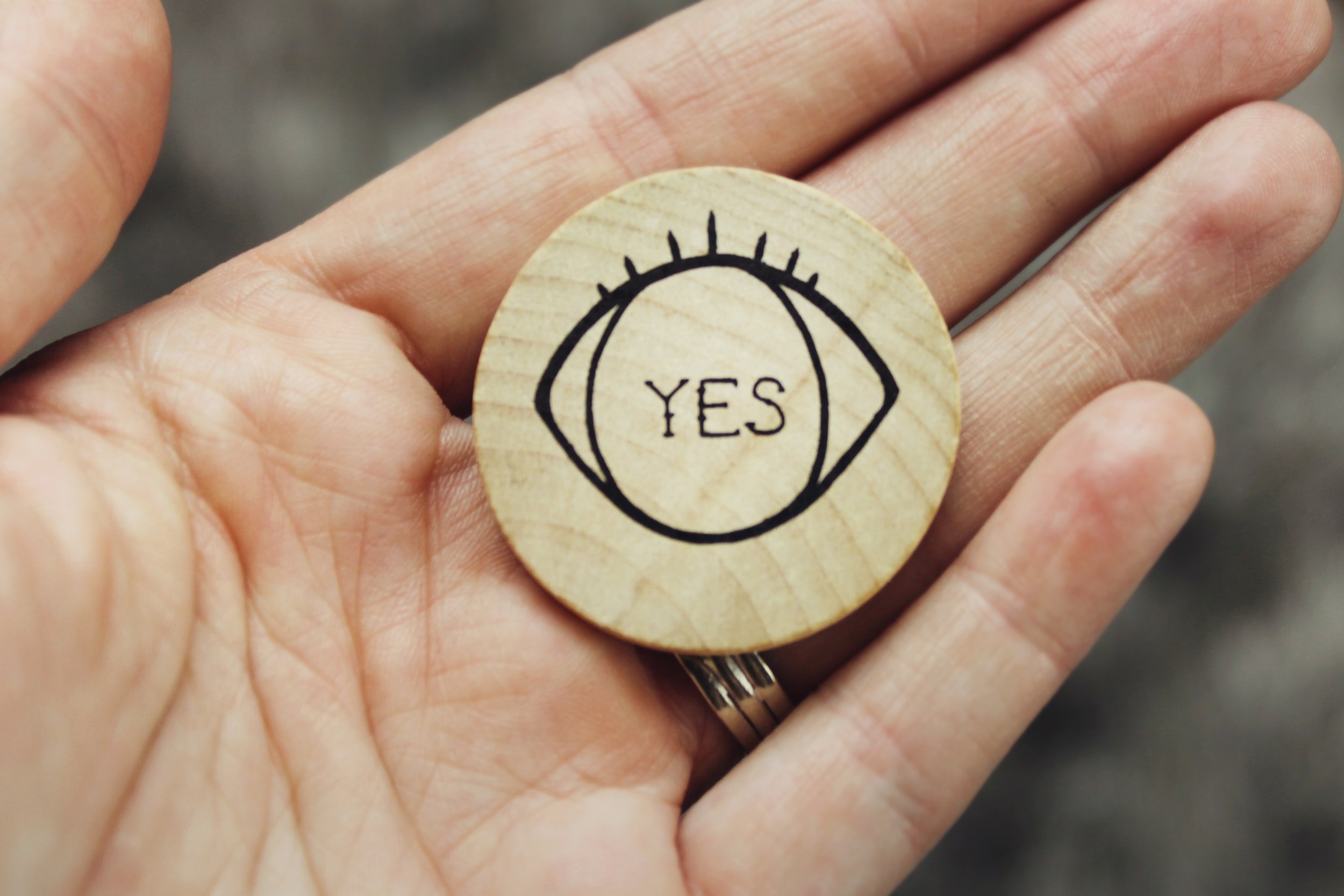Is it a YES or a No?
Battling Indecisiveness and People-Pleasing Tendencies.
You probably know the classic scenario:
You just said yes (again) and immediately feel the familiar pangs of regret.
You’re asked to join the PTA committee at your child’s school. You’re torn—you know that if you agree, you’ll be spread too thin and likely end up feeling even more overwhelmed than you already are, but that part of you falls silent when the people-pleaser in you insists you say yes.
We often get ourselves stuck in situations we don’t want to be in because we want to avoid the discomfort that comes with saying “no.”
As the quintessential “yes girl,” I was spread thin from having too much on my plate, and I often had to cancel commitments at the last minute (which ultimately left me feeling worse than the initial “no” would have).
So why do so many of us give to the point where we become resentful, irritable, and depleted, leaving us with little to give to ourselves and making it nearly impossible to become the people we want to be?
Knowing the Problem
The famous inventor Charles Kettering once said “A problem well-stated is half solved.”
In other words, part of the problem is that we aren’t aware that we have a problem. The prerequisite for change is the recognition that change needs to happen.
The problem: Humans are hard-wired for connection, and we falsely believe that saying no will earn us rejection. Furthermore, we carry a negativity bias, which means we are more likely to assume that people will judge us unfavorably, which makes us even more eager to overcompensate. On top of that, we’re also more likely to remember the negative comments people tell us than positive ones. For example, if I were to give you five compliments and one insult, which would you remember?
This, in a nutshell, explains some of the underlying reasons why so many of us are “yes people;” saying no simply isn’t worth the risk.
What we fail to realize is that we are often our own harshest critics. Just ask someone you know how they perceive you and see how that compares with how you perceive yourself.
In a classic experiment, researchers hired sketch artists draw pictures of people as they described themselves (the artists had not seen these individuals prior to drawing them). Later on, the same sketch artist drew the individuals again, but this time based on someone else’s description of them. When the sketches were compared, the two versions looked nothing alike.
It’s time to cut ourselves some slack.
The Knowing Self: Using History as a Reference Point
For us indecisive folk, it can be more difficult to tackle the “yes girl” problem. A helpful way to combat feelings of indecisiveness is to employ our knowing selves. This is the part of us that uses incidents from the past as a lesson for the future.
Let me explain:
Scenario 1: My friend just had a baby, and she asked me to make her dinner. My day is insanely busy. I feel slightly annoyed and pressured, but as a good friend, I know it’s the right thing to do, and when I did it in the past, it felt right. \Do I say yes?
Scenario 2: I haven’t hosted dinner in forever. I should be hosting, but I know that hosting is labor-intensive for me. I spend the whole day in the kitchen and my kids get my leftovers (both literally and figuratively). I know that in the past, hosting left me feeling tired and drained. Do I say yes?
Many of us overuse the word “should,” especially when it comes to ourselves. Throw people-pleasing into the mix, and you just might end up living your life by someone else’s rules. When “should” comes from a place of guilt, and not from a deeply-held conviction that it’s the right thing to do, you might want to consider saying no (or even “Let me think about it and get back to you”).
Give yourself permission to be okay with the awkwardness that comes with “Sorry, I just can’t commit to that right now,” or “My plate is really full, let me think about it and get back to you” (pro tip: it’s easier to say no when you’re on your own time and aren’t being put on the spot).
When we learn how to say no, our yesses become HELL YESSES, which is what they should always be.
As multirole women, we’re always juggling multiple roles and responsibilities, and it’s essential that we define our priorities so that we can establish healthier boundaries and promote better relationships with ourselves and the people around us.
Here are two important questions to ask when we don’t know whether to say yes or no:
1.“What do I know for sure if I look back at my history and use it as a learning opportunity?”
2. “What is compelling me to say yes? Is my yes grounded in guilt? Am I concerned that I will be less liked if I say no?”
In other words, it’s not what we do, but why we do it that matters.
Let’s give ourselves permission to experience the discomfort that is often essential for growth. Learn how to say no. Then, see how it feels when you say a whole-hearted YES and know that you mean it.
If saying “yes” leaves you feeling drained, resentful, and depleted, ask yourself if that yes should have been a no, and remember that for next time. It takes time to hone the skill and the intuition to know when to accept and when to decline, but keep practicing—I promise you’ll learn with experience!
Recognize that saying yes all the time dilutes your yesses (and your no’s). If you’re trying to be everywhere at once, can you really be anywhere at all?
And about that PTA—I’ll leave it for you to decide.


